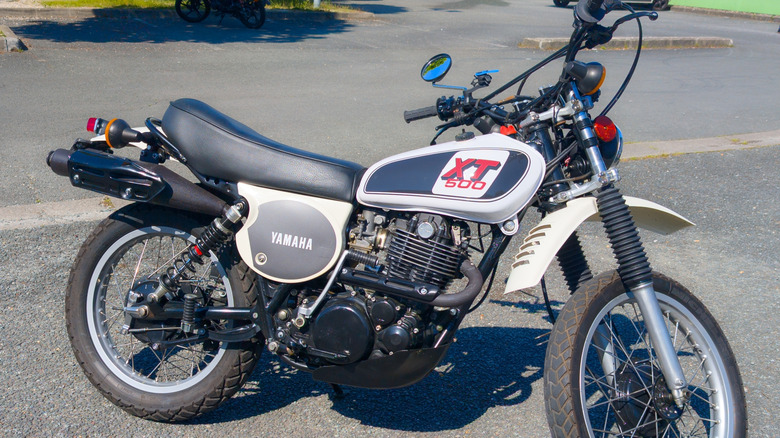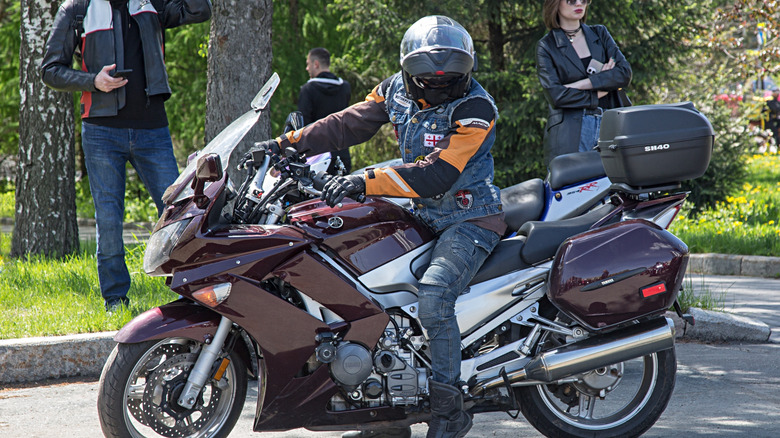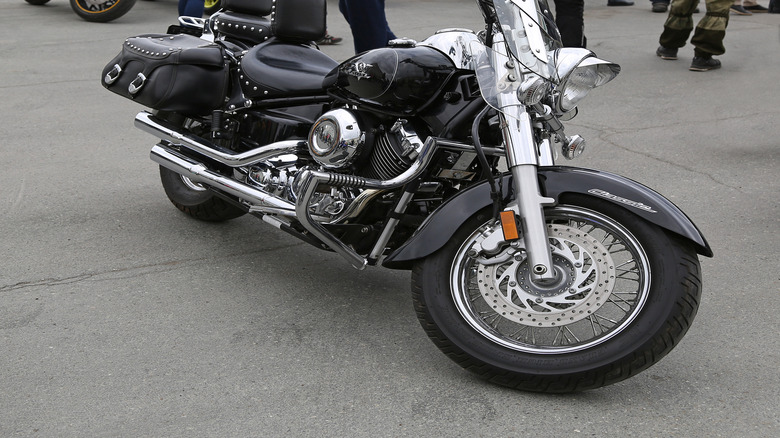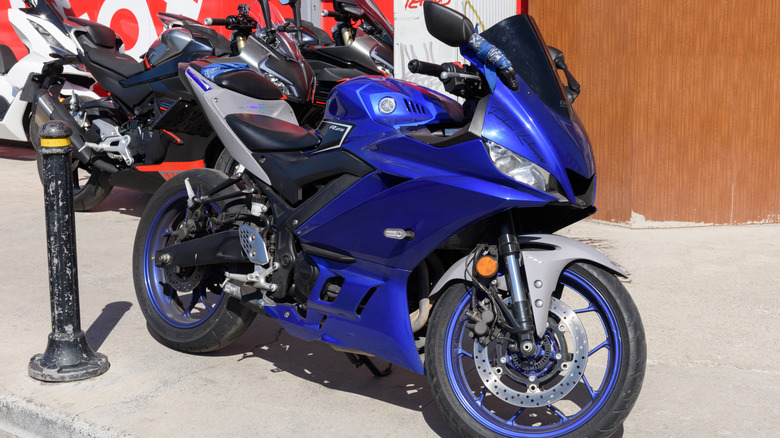5 Of The Most Reliable Yamaha Motorcycles Ever Made
Reliability is one of the biggest factors riders weigh when picking a motorcycle, and Yamaha has built a reputation for delivering machines that stand the test of time. That reputation comes from decades of engineering expertise and a company-wide focus on producing motorcycles that can handle thousands of miles without major issues. Yamaha applies the same attention to durability across categories, whether it's a lightweight commuter, a dual-sport, or a high-performance superbike.
To narrow down Yamaha's most reliable motorcycles, we looked at long-term owner reports, service intervals, and real-world mileage records. Models with consistent stories of crossing 40,000 or even 100,000 miles made the list. We also considered racing history, since endurance wins often highlight engineering durability. Input from expert reviews and MCN reliability ratings was factored into the selection. Each bike chosen, from dual-sports to cruisers and superbikes, earned its place by combining mechanical toughness with proven performance over time, making them standout examples of Yamaha's reputation for building dependable machines.
Yamaha XT500
The Yamaha XT500 debuted in 1976 after being shown at the Tokyo Motor Show the year before, and it quickly became one of the most influential dual-sport motorcycles ever built. At its core was a 499cc air-cooled single-cylinder engine with a single overhead cam and two valves, paired with a five-speed gearbox and chain drive.
Reliability was the XT500's hallmark. Yamaha tested prototypes far beyond normal standards, running them at full throttle in harsh desert conditions to identify weaknesses before production. The effort paid off. The XT500 earned its reputation in endurance racing, winning the first two Paris-Dakar Rallies in 1979 and 1980 with Cyril Neveu, along with victories in Australia's Finke Desert Race and the Paris-Abidjan-Nice Rally. Even in motocross, Bengt Åberg managed to take a modified XT500 to a Grand Prix win against lighter two-strokes.
A strong steel tube frame supported the dry-sump engine, which stored its oil in the backbone for cooling purposes. The bike featured twin rear shocks and long-travel forks, together with drum brakes and a skid plate, providing sufficient durability for rough terrain. The 309-pound weight combined with 28 horsepower and abundant torque made the machine both manageable and durable. Not everything was perfect, though; the kickstart-only design demanded effort, and its heft could be a challenge off-road. If the XT500 is not your cup of tea, there are always alternatives to consider.
Yamaha FJR1300
The Yamaha FJR1300 arrived in 2001 and quickly built a reputation as one of the most reliable sport-touring motorcycles ever made. Powered by a 1,298cc liquid-cooled inline-four, the FJR delivered strong performance with around 141 to 146 horsepower depending on the model year. Torque figures hovered at 99 to 102 lb-ft, giving it effortless highway pull even when loaded with a passenger and luggage. Unlike chain-driven tourers, Yamaha chose shaft drive, which meant less maintenance and long service intervals. Valve checks are spread out to 24,000 miles, and many owners report high mileages, often approaching or exceeding 50,000 miles, when serviced regularly.
Over three generations, Yamaha refined the package. The third and final version, sold between 2013 and 2021, introduced traction control, cruise control, ride modes, and, from 2016, a long-awaited sixth gear. That update also brought LED lighting and a slipper clutch, making it even more user-friendly on long rides. Models like the AE and AS featured electronically adjustable suspension and, in the AS, a clutchless shift system.
The FJR weighs 292 kilograms wet, but its weight remains concealed through stable handling and impressive agility for its class. Comfort was another strength, with a spacious fairing, adjustable screen, and comfortable seat design. With fuel economy averaging 51 mpg and a 25-liter tank, real-world range sits around 250 miles. The FJR1300 stands as one of the most respected long-distance motorcycles on the used market, despite being discontinued due to emissions regulations.
Yamaha XTZ750 Super Tenere
Yamaha created the XTZ750 Super Tenere during the late 1980s to compete with Honda's Africa Twin while focusing on Paris-Dakar Rally endurance. The engine was a 749cc liquid-cooled parallel twin, producing approximately 69 horsepower and 50 lb-ft of torque through its five-valve-per-cylinder design, which was advanced for its time. The five-speed transmission delivers power via a steel frame with telescopic forks in the front and an adjustable monoshock in the rear. The Super Ténéré features dual front discs, liquid cooling, and a large 26-liter fuel tank to enable extended travel on both on-road and off-road terrain.
Owners consistently praise the engine's toughness and the chassis's ability to handle weight and rough terrain. Many report racking up 60,000 miles before finally giving up on it. MCN's owner reviews rate it nearly 5 stars for reliability, even though the magazine itself held back with a more cautious score, pointing out issues related more to trim than to mechanics. That reputation for mechanical dependability is backed by Yamaha's Dakar success; the racing version, the YZE750, claimed victory in 1991, while the bigger XTZ850 dominated the event throughout the '90s.
Though it was never officially sold in large numbers in North America, the Super Ténéré became a cult classic in Europe. Today, it's remembered as one of the most underrated motorcycles of its era and the ancestor of Yamaha's adventure lineup, with its DNA carried forward into the more modern Ténéré 700.
Yamaha V Star 650
The Yamaha V Star 650 stands as one of the most accessible and dependable cruiser motorcycles, gaining popularity among riders of all experience levels. Powered by a 649cc air-cooled 70-degree V-twin engine, the bike produces 40 horsepower and 38 lb-ft of torque. The five-speed transmission system uses shaft drive technology, eliminating chain maintenance requirements. The engine runs on dual carburetors that maintain basic tuning capabilities, even for beginners. Its basic design reduces the number of parts that could fail, which explains why many V Star owners reach 50,000 miles without significant problems.
The bike presents itself similarly to bigger machines through its wide handlebars, extended wheelbase, and abundant chrome elements. Comfort is a strong point, with a seat height of 27 to 28 inches and a saddle designed to accommodate both single and dual riders. However, the ergonomics present challenges during extended rides, and engine vibrations become more apparent at freeway speeds. The five-speed gearbox also creates a problem because the motor reaches high revs above 65 mph, leading many riders to desire an additional gear.
Available in Custom, Classic, and Silverado trims, the V Star 650 offered everything from stripped-down styling to light touring capability. While Yamaha discontinued it years ago, used examples remain popular thanks to solid reliability and a massive aftermarket that lets owners tailor the bike to their needs.
Yamaha YZF-R1
Yamaha designed the YZF-R1 to outclass the Honda Fireblade and its own Thunderace, introducing innovations like a stacked gearbox and a compact engine that allowed better weight distribution and handling. The first R1 was lighter, more powerful, and immediately set a new benchmark for liter-class machines. Over the years, Yamaha kept refining the formula with new engines, frames, and electronics, cementing the R1 as both a road and racing legend.
Modern versions feature a 998cc inline-four with a crossplane crankshaft. This engine layout gives the R1 a unique sound and linear power delivery, translating into more confidence for the rider. Adjustable KYB suspension, magnesium wheels, and an aluminum twin-spar frame complete the package, ensuring stability on the track and sharp response on twisty roads.
But let's focus on reliability. Owners regularly report R1s surpassing 100,000 miles with proper care, thanks to durable engineering and high-quality components. That said, known issues like oil consumption, transmission quirks, and occasional electronic problems can surface, though they are not widespread. The R1's racing pedigree speaks for itself, with wins in World Superbike, multiple Suzuka 8 Hours victories, and close ties to Yamaha's MotoGP program.





